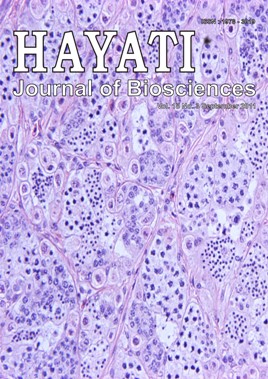<strong><em><span style="font-size:9pt;line-height:115%;">Syzygium cumini</span></em><span style="font-size:9pt;line-height:115%;"> L. better known as Jamun belonging to the family Myrtaceae is identified to have antidiabetic, anti-inflammatory, anti-pyretic and anti-oxidant activities. Anticancer activity of <em>S. cumini </em>L. fruits has been demonstrated. However, anticancer activity of <em>S. cumini</em> seeds on various types of human cancers has not been explored much. The methanol fraction of ethanol extract from the seeds of <em>S. cumini </em>was found to have significant antibacterial activity. This bioactive fraction was further tested positive for its anticancer activity on various types of human cancer cell lines indicating its potency. Structural characterization of the bioactive fraction was achieved using analysis of high performance liquid chromatography, ultra violet and infra red spectrum.</span></strong>
Abstract
Syzygium cumini L. better known as Jamun belonging to the family Myrtaceae is identified to have antidiabetic, anti-inflammatory, anti-pyretic and anti-oxidant activities. Anticancer activity of S. cumini L. fruits has been demonstrated. However, anticancer activity of S. cumini seeds on various types of human cancers has not been explored much. The methanol fraction of ethanol extract from the seeds of S. cumini was found to have significant antibacterial activity. This bioactive fraction was further tested positive for its anticancer activity on various types of human cancer cell lines indicating its potency. Structural characterization of the bioactive fraction was achieved using analysis of high performance liquid chromatography, ultra violet and infra red spectrum.Downloads
HAYATI J Biosci is an open access journal and the article's license is CC-BY-NC. This license lets others distribute, remix, tweak, and build upon author's work, as long as they credit the original creation. Authors retain copyright and grant the journal/publisher non exclusive publishing rights with the work simultaneously licensed under a https://creativecommons.org/


















.png) IPB University
IPB University Department of Biology
Department of Biology The Indonesian Biological Society
The Indonesian Biological Society 

